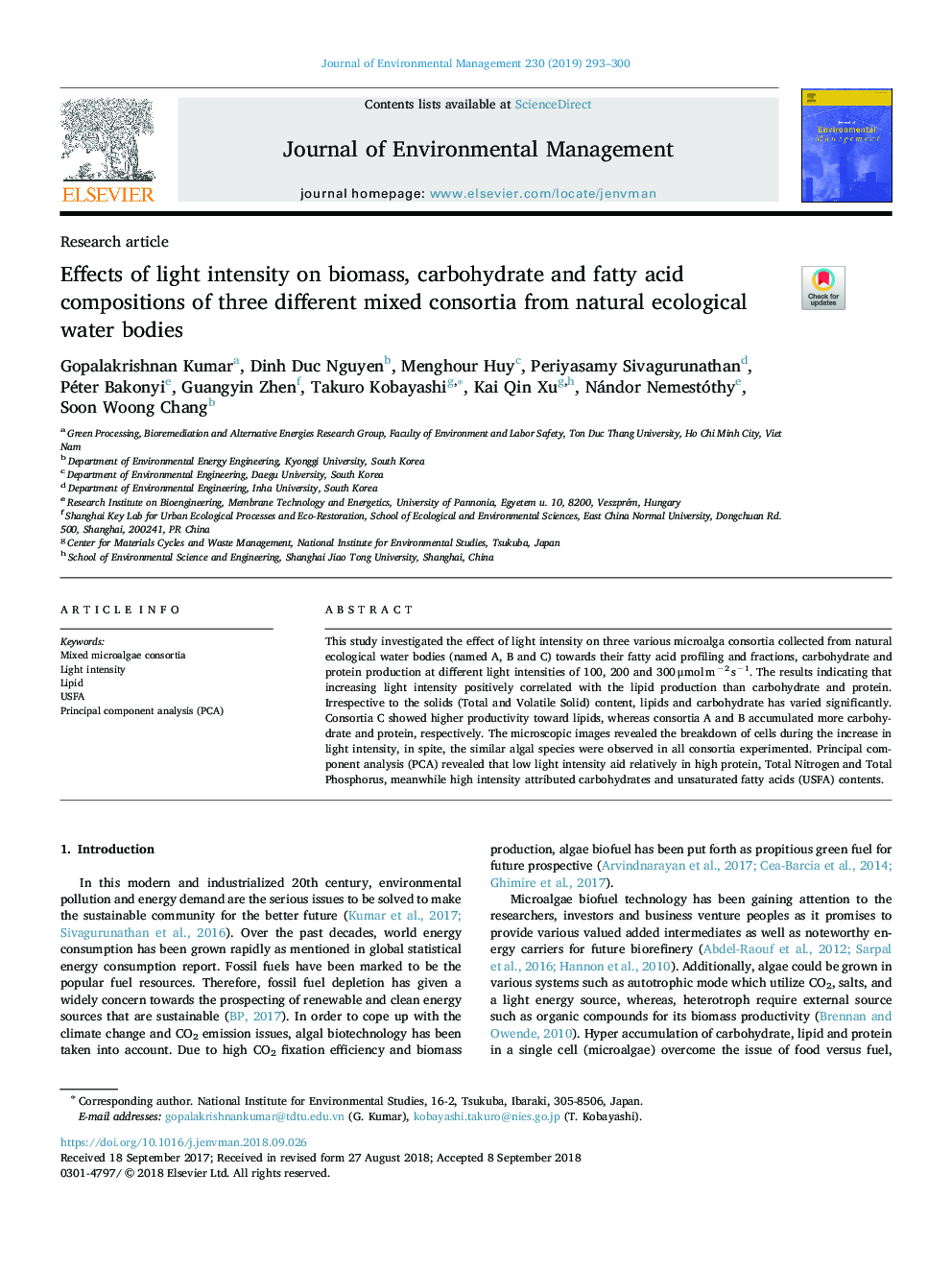| Article ID | Journal | Published Year | Pages | File Type |
|---|---|---|---|---|
| 11023246 | Journal of Environmental Management | 2019 | 8 Pages |
Abstract
This study investigated the effect of light intensity on three various microalga consortia collected from natural ecological water bodies (named A, B and C) towards their fatty acid profiling and fractions, carbohydrate and protein production at different light intensities of 100, 200 and 300â¯Î¼molâ¯mâ2â¯sâ1. The results indicating that increasing light intensity positively correlated with the lipid production than carbohydrate and protein. Irrespective to the solids (Total and Volatile Solid) content, lipids and carbohydrate has varied significantly. Consortia C showed higher productivity toward lipids, whereas consortia A and B accumulated more carbohydrate and protein, respectively. The microscopic images revealed the breakdown of cells during the increase in light intensity, in spite, the similar algal species were observed in all consortia experimented. Principal component analysis (PCA) revealed that low light intensity aid relatively in high protein, Total Nitrogen and Total Phosphorus, meanwhile high intensity attributed carbohydrates and unsaturated fatty acids (USFA) contents.
Related Topics
Physical Sciences and Engineering
Energy
Renewable Energy, Sustainability and the Environment
Authors
Gopalakrishnan Kumar, Dinh Duc Nguyen, Menghour Huy, Periyasamy Sivagurunathan, Péter Bakonyi, Guangyin Zhen, Takuro Kobayashi, Kai Qin Xu, Nándor Nemestóthy, Soon Woong Chang,
